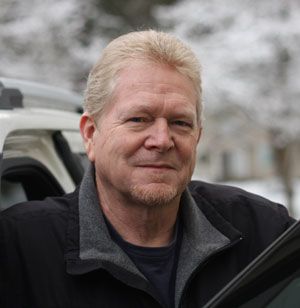Battling the elements
When I wrote of the surprise that the magnesium chloride used by the City of Spokane was found to contain PCBs, I did not want to short-sell its corrosive properties.
Besides now learning that those carcinogens exist in the mix, I’ve always known how tough it is on our vehicles’ wheels, paint, body, bright trim and undercarriage. It’s the best corrosive we’ve ever had on our roads. Besides the damage it causes by contact, the stuff is especially good at spreading, clinging and never drying out.
That last characteristic is especially problematic, since even water is corrosive if it is left on a surface long enough. That’s why it’s important to wash vehicles at reasonable intervals. If there is dirt on the paint surface, or mud on the undercarriage, it serves to hold the moisture for a longer period of time, advancing corrosion and rust. On older vehicles, when a rust hole develops, there is usually a buildup of dirt accumulated behind the damage.
In my previous column on the topic, I mentioned reports from maintenance shops that claimed dispensing nozzles and even entire brake pedals have dissolved on the trucks spreading the deicer. A few more examples of the ill-effects attributed to magnesium chloride came in from readers.
E.K. lamented, “This summer I had to replace 200 square feet of top soil and sod along the street in front of our house. In previous winters I have blown the snow from the street onto our lawn to save the moisture and help the city of Millwood out. The accumulation of chemicals killed the ground and literally sterilized it to the point weeds didn’t even grow where I had piled the snow. I won’t be doing that anymore!”
And D.L. groused, “For years I have tried to figure out why concrete floor in our shop, where my husband parks his truck, was breaking down (spalling), while the 2-car garage where my car is, was not. Quite sure it was the chemical used on the roads. Answer: he is on the road early to get newspaper, mail, etc. I don’t usually go out until afternoon. He is driving in all the toxic chemicals put on first thing in the morning. SO—if it eats concrete, what else is it eating??”
J.W. reiterated a recommendation from a county worker he knows, who spreads the concoction, stating, “He personally avoids driving in newly applied Mag Chloride whenever possible and advises others to do the same.” He added that this worker sees first hand the damage done to virtually everything it comes into contact with, “That includes shoes, clothing, painted surfaces, concrete, asphalt, human skin, and the myriad number of metal alloy components under any vehicle.”
J.B. sent me a photo of his rusty truck bumper he attributes to continuous deicer contact.
G.S. spoke of a way she deals with the winter’s onslaught, at least on her vehicle. She treats her SUV to a professional detail a couple times each year. Besides the evident advantage of removing dirt and chemicals from the body, wheels, carpets and chassis, there is another bonus. As she put it, “The best side benefit is the joy and renewed pride and admiration for the vehicle it can bring the driver.” Her ride was just made spotless by the pros, and she remarked, “What a great Christmas gift I gave myself!”
Readers may contact Bill Love via email at precisiondriving@spokesman.com.
